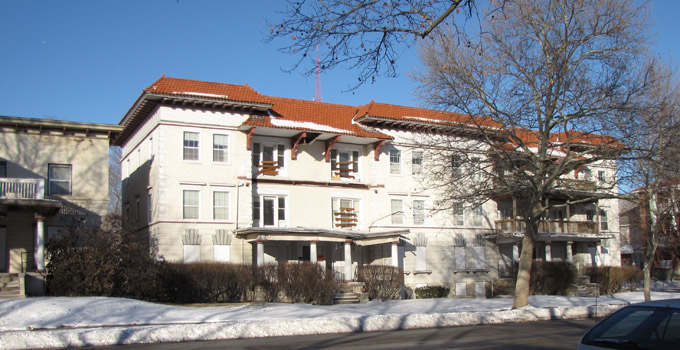The Board of Zoning Adjustment this afternoon voted to deny demolition of four historic apartment buildings on Armour Boulevard.
In a 4-1 vote, the BZA upheld a September ruling by the Historic Preservation Commission that blocks demolition for three years.
MAC Property Management and Silliman Group appealed the preservation ruling to the BZA on the issue of economic hardship.
The companies that have redeveloped 22 historic buildings on Armour Boulevard argued it was not financially viable to do the four buildings from 100 to 118 W. Armour.
They wanted to demolish the vacant and blighted buildings that have 24 two-bedroom apartments. The plan was to replace them with two new apartment buildings with a total 40 three-bedroom units.
The Historic Kansas City Foundation and the Old Hyde Park Neighborhood fought to preserve the buildings.
Charles Renner, a lawyer for the developers, said today they were disappointed with the BZA vote but “you’ve got to work through it.” He said they will evaluate options, including an appeal to Jackson County Circuit Court.
Katheryn Shields, a board member for the historic foundation, said they were pleased.
“I think this is a very important step for the preservation of the Armour Boulevard historic district,” Shields said.
Marty Phillips, a board member of Old Hyde Park, told the BZA that demolishing the buildings would be like knocking teeth out of a grinning gateway to the area.
Renner argued that the developers had tried unsuccessfully for five years to finance redeveloping the buildings.
They had construction bids up to $4.2 million and no one would finance the work, he said.
The also tried to sell the buildings for months and offered to give them away for a short time, Renner said, “all to no avail.”
Amanda Crawley, executive director of Historic Kansas City Foundation, said MAC was largely to blame for the condition of the buildings. They were decent shape after the company bought them in 2009 and were allowed to deteriorate, she said.
Developer Tim Bowman said MAC’s projected redevelopment costs were too high and other companies could do the renovation in today’s lending climate.
The buildings were designed in 1903 by Kansas City architect John McKecknie, who later designed the Kansas City Club and the Gumbel Building.
For now they remain boarded up and face a very uncertain future




Who’s talking